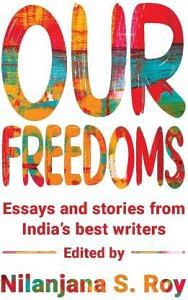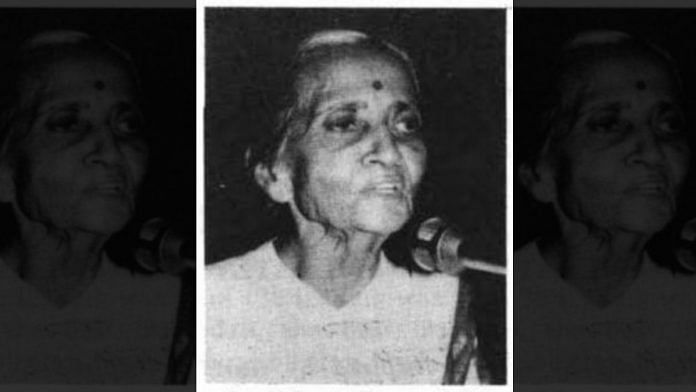By the early 1940s, India’s freedom struggle had intensified. The declaration of the Quit India Movement in 1942 – the first time that the Congress asked for an immediate and complete end to the Raj – allowed the twenty-two-year-old her moment in the sun. It led to the creation of the underground Congress Radio, and of Usha Mehta becoming its voice. But to understand the establishment of the Congress Radio, we must first understand the political situation in India at the time.
On 3 September 1939, the voice of Viceroy Lord Linlithgow rang through the frequencies of All India Radio, announcing that His Majesty’s Government was at war with Germany. As a colony of the government, so was India. The leaders of the Indian National Congress were not pleased to hear this. India’s involvement in the Second World War had begun, although the Viceroy had consulted neither his advisers, nor the Legislative Assembly, or Indian leaders. The anger against British rule grew incrementally, and almost three years into the war, on 8 August 1942, thousands of people gathered at the Golwalia Tank Maidan in Bombay to attend the meeting of the All India Congress Committee. It was here that the historic Quit India Resolution was passed and Mahatma Gandhi’s mantra of Karenge ya Marenge, Do or Die, was proclaimed.
Usha Mehta, now a master’s student at Wilson College, was present in the crowd that day and took Gandhi’s motto to heart. Announcing that all the leaders of the Congress could soon be arrested, Gandhi exhorted everyone ‘to act as his or her own leader, and find out activities which they can undertake on their own’.
Also read: Saeeda Bano, first woman Urdu news reader who got marriage offers and ‘go to Pakistan’ letters
The British came down heavily on the Quit India Movement, jailing nearly 60,000 Indians, including Gandhi and Nehru and most of the Congress leadership, within twenty-four hours. Protests erupted across Bombay, with thousands taking to the street, targeting the railways, telegraphs, telephones, police stations, post offices and other government buildings, because inactivating the means of communication and transport would make the ruling British literally incommunicado and unseat the government. Against the backdrop of famine, World War and imprisonment of the Congress leaders, if the Quit India Movement was going to survive, it would require new leadership. Young leadership.
The Congress also realized, having examined its past campaigns, that communication with the public was central to its success. Thus, the idea of an underground radio station was conceived, and Usha Mehta became its voice. Though it was known by many names – the Freedom Radio, the Ghost Radio, the Congress Radio – it was, very simply, the secret anti-imperialist voice of the Indian National Congress and almost no one, apart from those involved, knew anything certain about its inner workings. Where did it broadcast from? Who was behind it? And how long could it survive?
‘A transmitter of our own was perhaps one of the most important requirements for the success of the movement,’ Mehta would later say.
In India, radio broadcasting began in 1923 with the Radio Club of Bombay, followed by the Calcutta Radio Club, which was set up in the same year. Both went bankrupt after a few years. But it was not until 1936 that the Indian State Broadcasting Services (established in 1930), became the All India Radio (AIR) or Akashavni.
The Congress Radio, which began operations in August 1942, was set up to counter the British-controlled AIR, often tagged as ‘anti-India Radio’. Interestingly, the iconic AIR jingle based on raag Shivaranjini – violin played to the background notes of the tambura – was the work of a man who himself had fled a tyrannous regime. It was composed in 1936 by Walter Kaufmann, a Czech Jew who had fled Nazi persecution in Prague and arrived in India two years earlier.
Also read: How FM Radio spread positivity and created a sense of community during the lockdown
Though the radio was a tremendous tool for propaganda, it was also an expensive one. A relative of Mehta offered her ornaments to buy the equipment, but ultimately one of her colleagues, Babubhai Khakhar, managed to procure the funds. Other members of the team included the prominent socialist leader Dr Ram Manohar Lohia, Chandrakant Jhaveri and Vithaldas K. Jhaveri. As chief organizer of the enterprise, Vithaldas Jhaveri approached Nariman Abarbad Printer, well trained in radio engineering, to construct the Congress Radio transmission set.
Nanik Motwani, the owner of Bombay’s Chicago Radio, supplied the equipment. When the Congress Radio began broadcasting in August 1942, it was with the intention of telling people what was actually happening. And so it began.
At exactly 7.30 p.m., Mehta announced, ‘This is the Congress Radio calling on 42.34 metres from somewhere in India.’
Correspondence between the Bombay station director of AIR and the Government of India’s home department shows that the government became aware of the clandestine station on Sunday, 16 August, just three days after it was launched.
It was not easy to remain hidden from the police. Claiming to be recorded from somewhere in India, the workers of the Congress Radio were careful to change their addresses very often, moving from flat to flat, often in the middle of the night. Code names were given for the key Congress members: Sucheta Kriplani, in charge of the Bombay Congress office, was known as Bahanji; Dr Ram Manohar Lohia as doctor; Achyut Patwardhan, founder of the Socialist Party of India, as Kusum.
Also read: Iconic Akashvani tune to secret station and banned songs — India’s tryst with radio waves
At first, the station broadcast news bulletins and talks by prominent leaders of the freedom struggle. The news dispatches – ranging from merchants refusing to export certain goods to the arrests of leaders and civilians, were received by special messengers in remote corners of the country. Since newspapers often dared not touch on politically sensitive subjects, the Congress Radio became the sole means by which people knew what was actually happening. ‘When the press is gagged and all news banned, our transmitter certainly helps a good deal in furnishing the public with the facts of the happenings and in spreading the message of rebellion in the remotest corners of the country.’These words by Mehta became emblematic of the freedom struggle.
The news was read in English by Dr Ram Manohar Lohia, Achyut Patwardhan, Moinuddin Harris and Coomi Dastur. Usha Mehta read in both English and Hindustani. They began each programme by playing Iqbal’s ‘Saare Jahaan se Achha’ and ended with Bankim Chandra Chatterjee’s ‘Bande Mataram’. Their programmes gained momentum, connecting people from all across India, broadcasting first only once a day, and later twice, in the morning and evening, in English and Hindustani. Sure enough, in villages and cities, large groups would gather around a single radio and listen to the broadcast, whose content was often brazenly against imperial rule and Britain’s plunder of India.
 This excerpt from ‘Our Freedoms: Essays and Stories from India’s Best Writers’ edited by Nilanjana S. Roy has been published with permission from Juggernaut.
This excerpt from ‘Our Freedoms: Essays and Stories from India’s Best Writers’ edited by Nilanjana S. Roy has been published with permission from Juggernaut.



